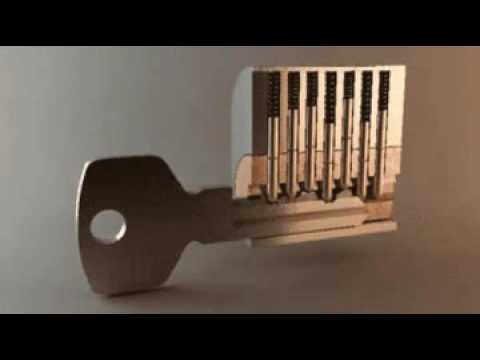Home > Sections > Organs & Systems > Lock & Key Theory
Lock & Key Theory
Keywords 
Lock & Key, enzymes, reactions, substrate, denatured.
Introduction
The lock and key theory of how an ezyme reacts with proteins in your digestive system is how we get glucose and fructose from the foods we eat. The proteins form together with an enzyme to create an enzyme-substrate complex.
The Basics
So, lock and key. What would you do with an actual lock and key? You have a lock on your door, and to open it, you have to insert a key to open it. But, how does your door know what key is the correct one? It is formed in a combination to be set a certain way, so that only one key can fit the door and be opened.
Interesting fact: there are over 1,500 enzymes that have been identified as a result of constant research. Some have even had their structure shown through x-ray crystallography, which was made famous by Rosalind Franklin.
This is the same as the theory about enzymes. An enzyme has a combination like the lock of the door. When a protein is sought out to break up, it has to be the same combination in order for it to attach and be broken down into sugars.
Here is a YouTube video from Kay Science on lock and key theory:
The Three Molecules
There are three molecules that are broken down by enzymes:
- Carbohydrates: these are molecules that are found in living organisms, and are made up of carbon, hydrogen and oxygen atoms.
- Proteins: a combination of amino acids, a protein is needed for the progressive growth of muscles. An enzyme itself is a protein, but they also break down other proteins.
- Lipids: a diverse group of organic compounds that consist of fats, oils, hormones and membranes that do not function well with water.
Denatured Enzyme
An enzyme has to work within a certain range of temperature and pH balance. If the enzyme ends up being exposed to temperature or pH levels outside of this range, it can become denatured, which means that it will stop working and not break anything down.
Too Long; Didn't Read
The name that suggests it works like a lock and key, this theory is exactly that. Where you have a specific key to open a lock, your body has certain enzymes that work with certain proteins and minerals that are unlocked by each one.
How it works is that the substrate interacts with the active sites of the enzymes, and upon finding the right one, it then attaches to it. It's all about different enzymes breaking down all the different foods in your body.
Three molecules are broken down - carbohydrates, proteins and lipids (fats). Sometimes the lock and key theory doesn't work, as the enzyme has become denatured. This can mean that the enzyme has been subject to temperature change or a pH balance change.







 The Digestive System
The Digestive System Rosalind Franklin
Rosalind Franklin

